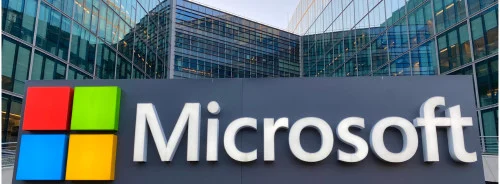HealthManagement, Volume 11, Issue 2 / 2009
Asset management and control is an enduring challenge for all hospitals. The scope and scale of hospital ‘assets’ is both vast and heterogeneous. Nevertheless IT has been increasingly deployed, often in imaginative ways, to meet such challenges. This article provides a working example of asset management: the control of an expensive product found in most hospitals, the antidecubitus mattress. Lessons from this case were applied by the hospital’s IT management to other items such as wheelchairs and infusion pumps, and could in theory be extended to any non-fixed asset.
THE REGIONAL HOSPITAL ST. TRUDO, BELGIUM Daniël Loos is IT Managerat the Regional Hospital St.Trudo, Belgium.
The Regional Hospital St Trudo (RSZT) is the result of a merger between the St. Anna and St.
Joseph hospitals in St-Truiden, Belgium. The hospital has 310 beds and is the main regional hospital for the Belgian region of South-West Limburg and southern Flemish Brabant.
With more than 700 employees, including about 90 physicians, it provides about 11,000 patients with healthcare services per year. The hospital is equipped with an electronic patient record system and continuously invests in innovative medical equipment and systems.
Anti-Decubitus Mattresses to Infusion Pumps and More
The RSZT
strives to constantly improve care for its patients. In this context, we at the
IT department sought a method for the management of rather expensive anti-decubitus
mattresses. These are used to prevent wounds by patients who need to stay in
bed for prolonged periods.
The biomedical department of the RZST has 24 standard antidecubitus mattresses in stock. Unfortunately, these mattresses frequently disappeared after discharge of a patient, and it required considerable amounts of time for the biomedical department to track the missing mattresses. The management of the mattresses was not always optimal, which sometimes resulted in the need for making extra rental orders from an external supplier. Together with network partner NextiraOne, we installed a powerful wireless network from Cisco. This wireless network makes it possible for doctors to consult the electronic patient records at the bedside of the patient and also have access to most up-to-date medical and nursing information.
WiFi RFID tags of AeroScout have been deployed to help the biomedical department to quickly locate critical materials.
All mattresses now get a small wireless RFID tag attached that is permanently connected to the wireless network. Thus the biomedical department now always knows where each mattress is, and does not need to waste time with unnecessary searches or face the need to order extra units. This was welcome news from a business point of view, since the rental of anti- decubitus mattresses had been generating wholly unnecessary costs.
Other critical materials such as wheelchairs and infusion pumps have also been given a RFID tag, saving time for receptionists. At the reception, there are about ten wheelchairs available for the transport of patients. Previously, when all wheelchairs were in use, receptionists had to make a physical search to track a free wheelchair. Currently, it suffices to open the AeroScout web application and locate all wheelchairs. The IT department has set up the system to generate an alarm when there is only one wheelchair left, or when a wheelchair has been parked at a place other than the reception beyond a specified period of time. This ensures that patients with mobility assistance requirements always have a wheelchair available when they visit the hospital.
The RFID tags are configured to regularly transmit a localisation signal via the wireless network. To monitor these signals the hospital has installed about 259 wireless access points in its new WLAN network, which will soon also be used for monitoring cardiac patients as well as telephony.
Human Assets: Tracking Geriatric Patients
The new technology is now also being harnessed by us to allow geriatric patients to leave their wards without a risk of getting lost or confused in the hospital – a not uncommon occurrence. In the future, such patients will have a RFID tag so that the nurses will get a warning when they leave the department. Through triangulation of the antennas the system can determine within a few metres where a RFID tag is located.
Spinoffs From Modernisation
The asset management functionalities offered by the RSZT are spinoffs from modernisation of the wireless infrastructure at the hospital. These have provided us with the technical means to master a multitude of other challenges.
Staff now complete electronic patient records at the bedside of a patient. When the lab delivers new results, the doctor has these results immediately available in a patient's room. Previously the results had to be printed and delivered to the doctor. The hospital soon intends to launch an application for doctors to prescribe medication at the bed of the patient and directly send this to the hospital pharmacy. The pharmacy can prepare the new drugs, or adapt certain doses to the new, recent lab results.
Closer to our IT department, RFID tags are also being used by the RSZT to monitor temperatures in different server rooms. Over the years, a rising number of servers had sometimes overloaded the cooling system. Overheating, in turn, led to errors in the system log files. Currently, an alarm is sent to the IT department to adjust the server cooling systems in time.
The Future
By 2012, the merger of both hospitals St. Anna and St. Joseph will be located on one campus. The IT department examined the infrastructure changes needed to promote the work of the hospital staff and the welfare of the patients. A new wireless network which supports RFID technology was one of the first items on the agenda. This network is ready for the future, it only just has been taken in use and we are already getting more questions of other departments that see lots of benefits for their business.
Youville Hospital and Rehabilitation Center Cambridge
John F. Wilder,
Director of Information Systems.
Assets are not always material objects like the expensive antidecubitus mattresses or the porter’s chair mentioned in the previous article. Computer software is also an asset, moreover it is an asset that can prove hard to manage and one that is often overlooked. John F. Wilder, Director of Information Systems at Youville Hospital and Rehabilitation Center Cambridge, Massachusetts, tells of his experience.
When I was hired as the Director of Information Systems at Youville Hospital and Rehabilitation Center, I knew that one of my first tasks was to assess the resources. One of the key resources is of course, software. I was concerned about the Microsoft software. I had read enough about businesses being fined through various audits for not having the proper number of licenses to match the number of installed copies. By doing a quick check, I could see that over time, the hospital had purchased licenses through various channels at various times.
It is not a unique problem for IS Director’s or CIOs to have licenses and software not in compliance when you have a facility with 600+ employees and 350 PCs deployed. As you change vendors and make purchases of computers and software, tracking and filing licenses can sometimes take a backseat to more important issues.
As the new IS Director for the Hospital, I needed to know what software was in house, where it was installed and what was actually documented. I also wanted to make sure our 600+ users had the “tools” they needed to do their job. In addition, I was concerned that we were at risk and may not be in compliance and this would clearly be recognised in any audit. Lastly, I wanted to do this once and do it right.
The solution to this problem was Soft-Aid, a Microsoft® Gold Certified Partner for Licensing Solutions. Soft-Aid installed an inventory tool on the network, which, through an automated discovery process, compiled a precise inventory of software throughout the network. The next step was to check our physical inventory and records to see what documented licenses we had in house and what had been previously purchased by my predecessor. After a detailed comparison of licenses and installed software, I could see we were lacking in quite a few areas.
Of course this presented another problem with the available budget for software. I needed more licenses than I had available funds. Working with Microsoft, I found that we were able to qualify for the Microsoft Open-License Charity programme. The programme allows eligible organisations to acquire multiple software licenses at reduced prices. I was able to purchase the necessary software licenses within the existing budget.
Benefits:
I received a thorough inventory without expending resources I couldn’t afford and time I could not commit. The estimated cost savings of performing a manual inventory was approximately $5000;
Through the assessment I was able to bring the hospital in compliance and eliminate the risk and liability issues;
I received expert advice on how to manage my software inventory. As a result of the recommendations I updated software acquisition policies and procedures;
And of course, learning that we were eligible for Charity pricing will benefit the hospital going forward. During the first purchase, we realised a savings of $15,000.
Authors:
Daniël Loos, Manager ICT
St Trudo Hospital, Belgium
John F. Wilder,
Director of Information Systems
Asset
Management
Asset planning and management, in the context of a healthcare organisation, is a detailed and structured approach to the long-term management of assets, from the valuation, purchase, and operation, to the sale of assets. The aim is to enable efficient and effective delivery of health services while respecting and following strategic objectives.
Asset management is thus a process that includes: Identification of a need for the asset; A decision that is based on evaluation of alternatives that takes into account full life cycle costs, benefits and risks of the asset; Provision of the asset, including its operation and ongoing maintenance, and The disposal of the asset.
Even before the present economic crisis, hospitals across the world have been confronted with equipment financing pressures and asset management challenges.
Classically, the goals of a good asset management programme are to minimise the need for new capital expenditures, while increasing utilisation rates and reducing offline maintenance for existing equipment. An equally important, but ‘softer’ issue is to maximize the time physicians and nurses spend on direct patient care (the latter, typically, spend up to half their hours on administrative tasks). Finally, asset management programmes in hospitals also seek to improve regulatory compliance and enhance patient safety and healthcare outcomes.





